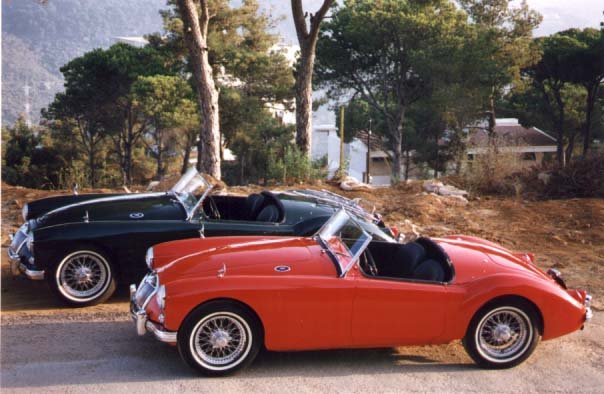Sam Payne, Henry Payne Sr. and Henry Payne Jr.
NOTE: I think we all have a 'bucket' list of some sort. Henry Payne Jr., his dad and his brother decided to attend a driving school. I am sure this is on my list somewhere. Somewhere long before my backside got too wide. Bottomline, do this before you get too wide. Have fun.
**************************
If the Honda Civic is America’s best-selling entry
level sedan, then the Formula Skip Barber is our most popular entry-level race
car.
This Christmas holiday, the Payne family got behind
the wheel for a test on Mazda Raceway in picturesque Laguna Seca,
California.
The Barber car was originally manufactured in 1986 by Mondiale for the racing school but has since been made in-house. The current car – there are 90 in Barber’s stables nationwide – was last modified in 2000 and is powered by the old, 2.0 liter Dodge Neon engine. The four-banger produces 132 horsepower and is the only thing the car shares with your average grocery-hauler.
The cockpit is all business. The single-seater has no
navigation screen, no radio, no cup-holders. All you get are the essentials: a
tachometer and dials for monitoring oil and water temperature. Cloth seats?
Fuhgetaboutit. A hard plastic bucket is standard. Back problems? Shove in as
many foam inserts as you like. If there is a convenience to formula cars it’s
that the steering wheel is removable – in order to help giants like your 6’5”
author to get his knees under the dash. The inconvenience is no eight-way
adjustable seats. Zero-adjustable, in fact. Pedals too close? The mechanics will
have to find you another car with deeper pedals.
Barber drivers can acclimate to a racing environment
with enough power to thrill, but not enough to get them in serious trouble
around Laguna’s legendary 2.2 mile, 11-turn roller coaster.
Our 16-man Barber school was a typically diverse lot
ranging from a 15-year old karting ace to a 50-something who had never turned a
wheel in anger to your racing-addicted scribe and his two sons. Track sessions
over the three-day school are preceded by classroom instruction explaining
everything from vehicle dynamics to course layout.
Suited up and safely secured in a five-point safety
harness, you find a car surprisingly amenable for even those with little
experience depressing a clutch pedal. The gearbox is a sturdy, 5-speed
sequential that requires a pull for up-shifts and a push for downshifts. No
mis-shift prone H-pattern to labor through, no double-clutching required for
downshifts (though instructors urge a simultaneous blip of the accelerator with
clutch depression to smooth downshifts under braking).
Press the starter button and the engine roars to life
(burbles to life is more accurate - a can muffler swallows the end of the
tailpipe, choking sound to preempt NIMBY nabobs from shutting down the track for
disturbing the peace, destroying the planet, etc.). Row the gears on Laguna’s
humped main straightaway and you’ll hit 120 mph before plunging into Turn 2, a
daunting, 190-degree, second-gear, double-apex left hander. It is here that the
race chassis really shines. The track demands driver precision and the car’s
stiff frame and multi-link suspension takes you where you want to go with none
of the drama of a sedan chassis (Barber offers a parallel school with
race-prepared Mazda MX-5s and the formula cars run rings around the sports cars
despite the Mazda’s 45 HP advantage).
This predictability builds trust between
driver and car — essential for the track’s signature, blind, downhill, corkscrew
Turn 8 that would make a hardened Cedar Point roller coaster rider scream.
Armed with walkie talkies and strategically placed
around the track, the school's Barber-graduate instructors supplement the track
experience with immediate input. Early track sessions bring each car to a “stop
box” after each lap to review a driver’s mistakes and improvements. The advice
is offered with a mix of instruction and fun. “If you’re going somewhere you
don’t want to go, don't go there faster,” quips one.
By Day Three, you and car are one. The final checker
falls and the spell is broken. Back to real life. Back to work. Back to the
Civic. Hmmm, how many Barber schools could I sell it for?
photo credit: © 2014 Henry Payne Jr./The Detroit News
text credit: © 2014 Henry Payne Jr./The Detroit News

